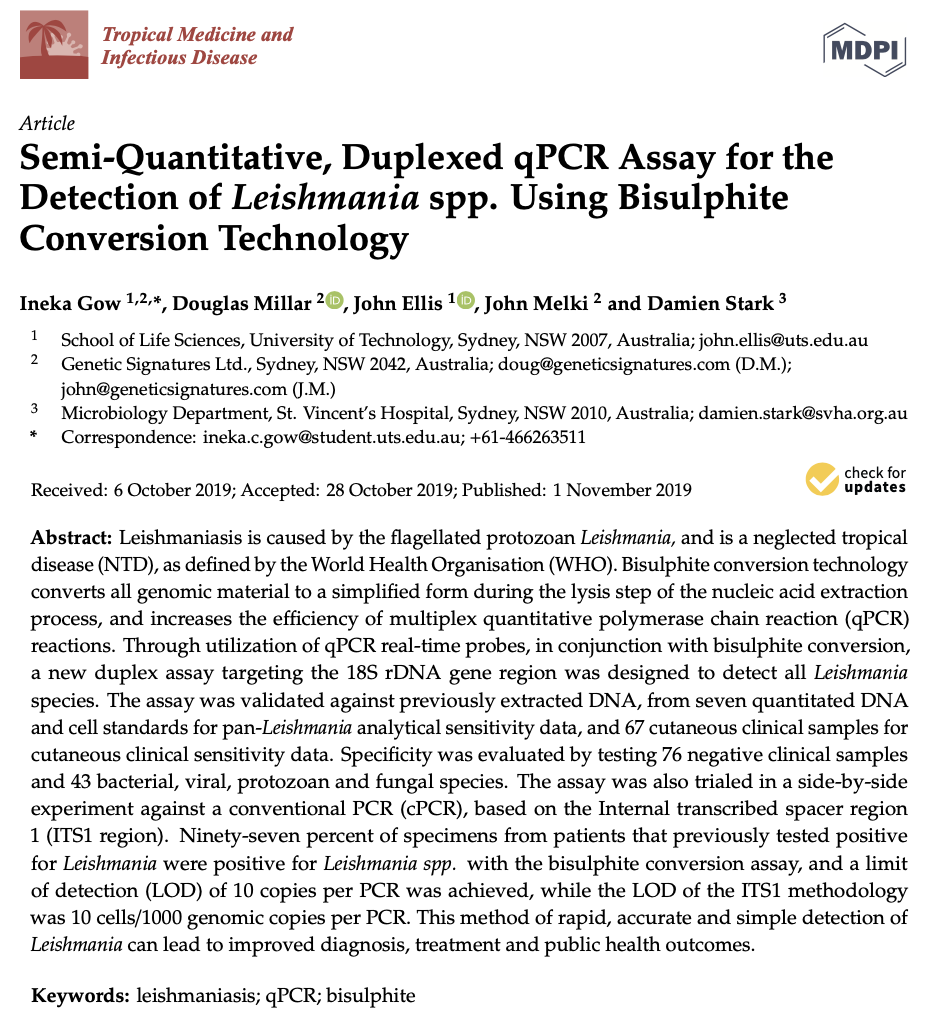
- February 12, 2021
Semi-Quantitative, Duplexed qPCR Assay for the Detection of Leishmania spp. Using Bisulphite Conversion Technology
Ineka Gow, Douglas Millar, John Ellis, John Melki and Damien Stark
School of Life Sciences, University of Technology, Sydney, NSW 2007, Australia; john.ellis@uts.edu.au, Genetic Signatures Ltd., Sydney, NSW 2042, Australia; doug@geneticsignatures.com (D.M.); john@geneticsignatures.com (J.M.), Microbiology Department, St. Vincent’s Hospital, Sydney, NSW 2010, Australia; damien.stark@svha.org.au|2019|Tropical Medicine and Infectious Disease|4,135; doi:10.3390/tropicalmed4040135
Leishmaniasis is caused by Leishmania spp. and is classed as a Neglected Tropical Disease (NTD) with an increased impact on global mortality and morbidity. 18s rRNA (18s rDNA) gene is a highly conserved, multi-copy gene across all Leishmania species, making it an excellent choice for a Leishmania detection assay. In this study, a duplex assay targeting the 18s rDNA gene region was designed using probes to detect all Leishmania species. Bisulphite conversion technology was incorporated into the nucleic acid extraction to increase specificity of the assay. Bisulphite conversion converts all genomic material to a simplified form of three nucleobases during the lysis step. The simplification of the genome increases the homology and allows for different primer and probe sets off differing targets to be designed with similar melting temperatures, reducing specificity issues. The assay was developed on the Mic qPCR Cycler using fast reaction times. This is possible due to the patented magnetic induction technology. The developed assay was validated against previously extracted DNA and cell standards, as well as compared against the typical method using conventional PCR based on the Internal transcribed spacer region (ITS1). 65 out of the 67 previously described positive tissue samples were tested positive in the novel assay. No cross reactivity was observed with bisulphite conversion incorporated into the nucleic acid extraction. The assay achieved a lower LOD of 10 cells per reaction when compared to the conventional PCR method that has a LOD of 100 cells per reaction. This novel Leishmania assay provides a simple and economical solution for detection of the NTD. The low cost allows application in under resourced countries where leishmaniasis is endemic too.